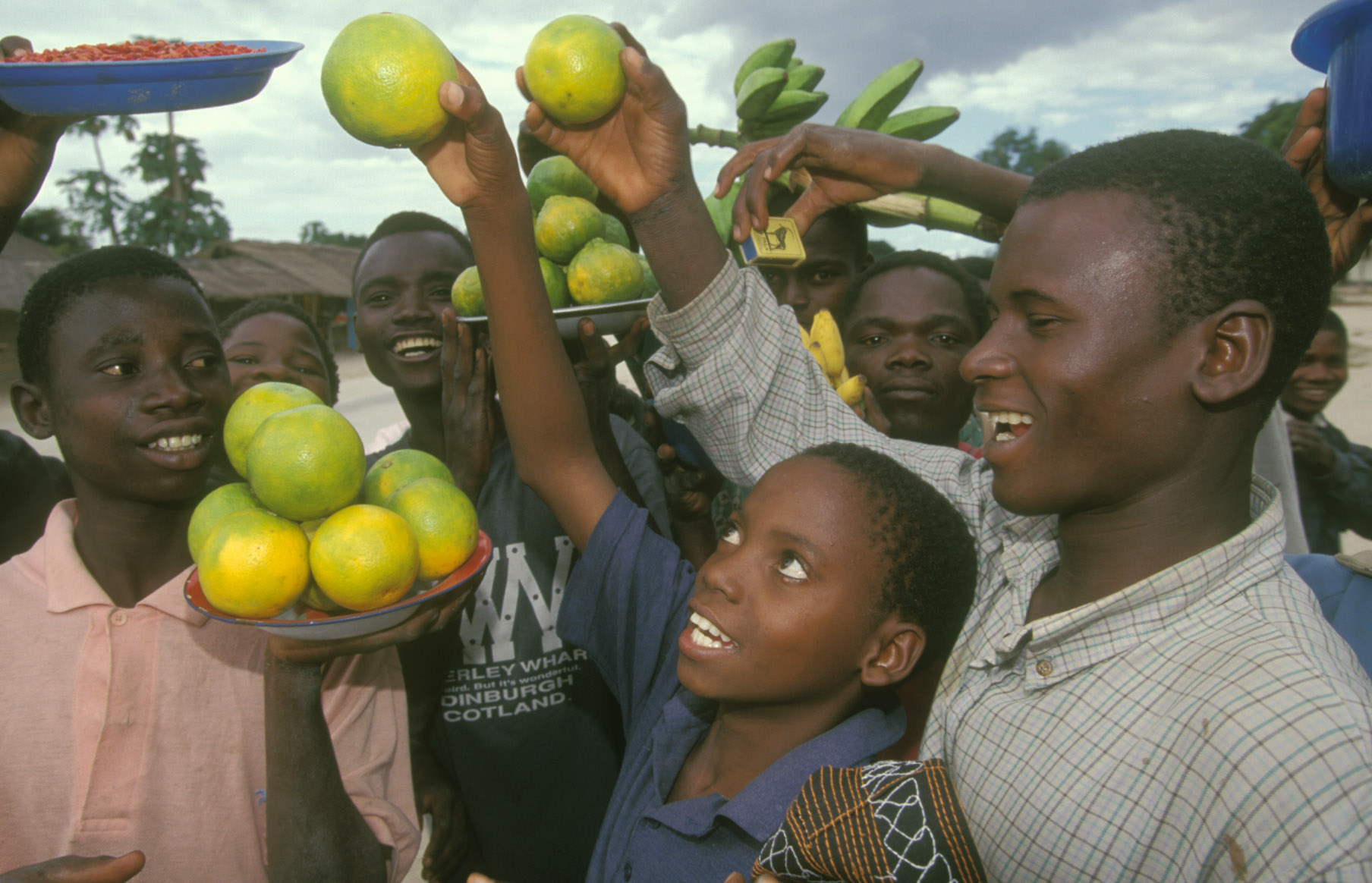Making agricultural investments nutrition-sensitive: lessons from growing FAO, World Bank and IFAD collaboration

The 2008 food crisis brought the issues of malnutrition and undernutrition to the world’s attention. Today, undernutrition remains unacceptably high and the human and social costs are also ethically unacceptable.
In November 2014, FAO and the World Health Organization (WHO) member states adopted the Rome Declaration on Nutrition and its Framework for Action, which invites governments to mainstream nutrition into food and agricultural investments and policies. International financing institutions, including the World Bank and the International Fund for Agricultural Development (IFAD), have since made “nutrition-sensitive agriculture” a priority in their investment.
Nutrition-sensitive investments
Nutrition-sensitive agriculture places consumers’ nutritional and health needs at the centre of agricultural and rural development planning. This entails understanding what are people eating, how do they access their food and how can nutritious food become more accessible and affordable. It also means looking at how agricultural activities can affect individual health – from ensuring food safety and access to safe water to reducing the burden of agricultural work.
A nutrition-sensitive approach requires addressing nutrition issues in all phases of the project cycle, starting with the situation analysis, project scoping and design. That is why the World Bank and IFAD have been increasingly turning to FAO’s Investment Centre and Nutrition and Food Systems Division to support them and governments in incorporating nutrition into the design of agricultural investments.
The Japanese-funded Policy and Human Resources Development (PHRD) Trust Fund has been the cornerstone of the collaboration between FAO and the World Bank on nutrition-sensitive agriculture, providing resources to enhance their nutritional impact in Africa. FAO has helped mainstream nutrition into the design of the Agriculture Investments and Market Development Project (AIMDP) in Cameroon; the Emergency Food Crisis Response Project (EFCRP) in South Sudan; and the Regional Great Lakes Integrated Agriculture Development Project in the Democratic Republic of Congo (DRC). It has also supported the development of a stand-alone project on Improving Livelihoods and Nutrition Outcomes for Smallholder Livestock Farmers in Sudan.
In addition to the PHRD-supported projects, FAO has assisted in mainstreaming nutrition into the World Bank-funded National Agricultural and Rural Inclusive Growth Project in Kenya and the IFAD-funded Rwanda Dairy Development Project.
Interventions along the value chain
The projects tend to focus on developing specific value chains, such as rice, cassava, maize, sorghum and/or dairy and meat products, increasing productivity and market access. The challenge now is to apply the lessons learned from recent activities on single commodities to improve and diversify diets, as well as overall nutrition and health. This means not only increasing production and sales, but also considering local food consumption, the quality of products, the accessibility and affordability of healthy foods and other indirect impacts on health. Each project design responds to local needs and opportunities, but shares interesting commonalities for achieving large-scale nutritional impact. Positive interventions can be made along the agrifood value chain – from diversifying crop production, promoting biofortified varieties, promoting home gardens, improving access to safe water, adopting techniques to enhance the nutritional value of food, to reducing food losses, adopting labour-saving technologies and easing women’s workload. Additionally, linking value chains to public procurement programmes (e.g. school feeding and health facilities as in Rwanda) helps improve market access for small-scale producers while enhancing poor households’ access to nutritious foods.
Nutrition education and guidance
All projects aim to provide nutrition education, through cooperatives (Cameroon), village groups (DRC, Kenya), farmer groups, farmer field schools, livestock producer groups (Sudan, Rwanda) and livestock field schools (South Sudan/Rwanda), to create more demand for nutritious foods and promote healthy diets. Most projects seek to strengthen the capacities of national institutions working on nutrition-sensitive agriculture.
FAO has developed guidelines on Designing Nutrition-Sensitive Agriculture Investments: guidance and checklist for programme formulation and a Compendium of Indicators for Nutrition-Sensitive Agriculture and is now developing e-learning modules on this topic, with financial and technical support from The World Bank, European Union and other partners.
Contact: Charlotte Dufour, Nutrition Officer, Nutrition and Food Safety Division.
